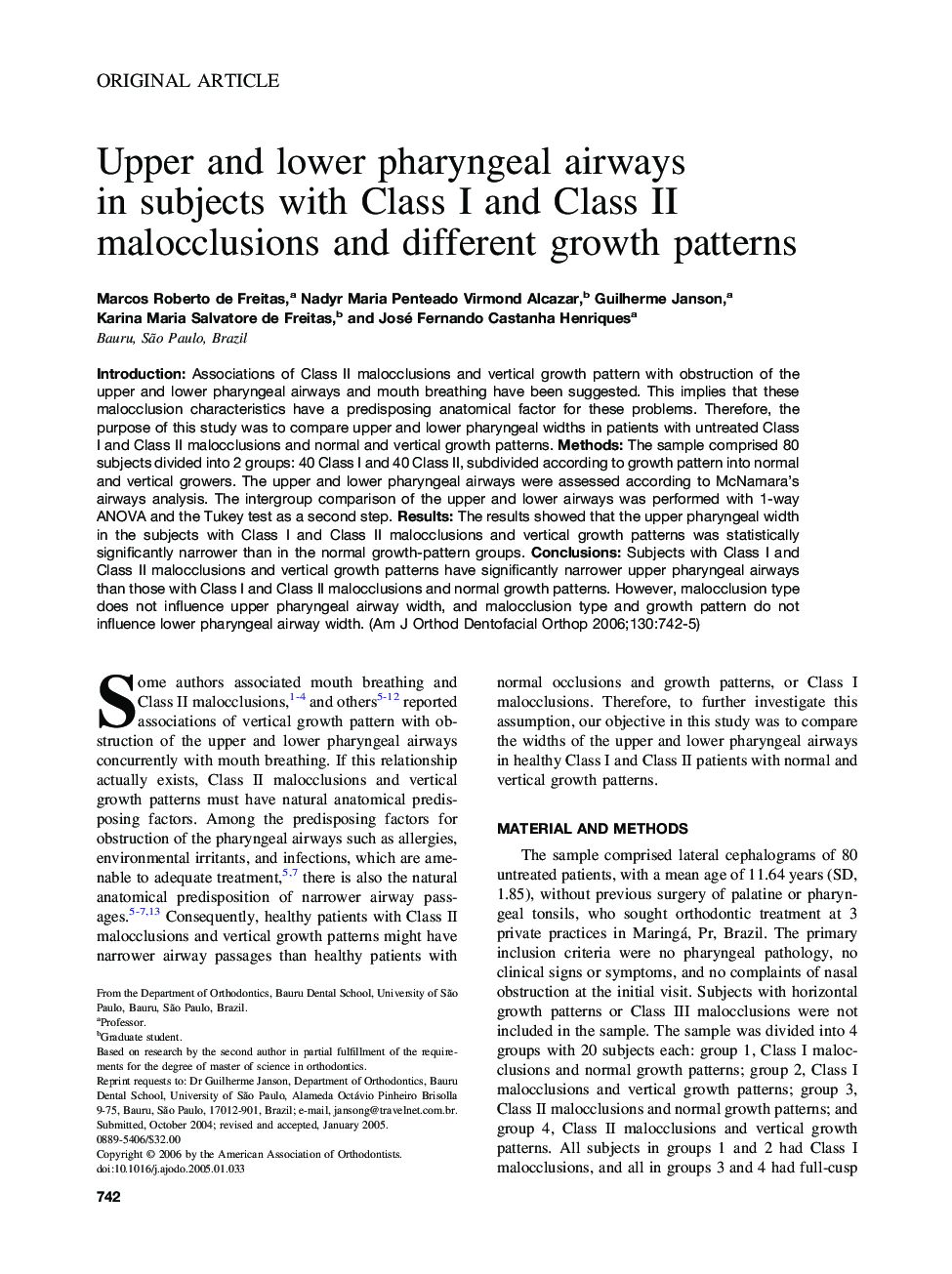| Article ID | Journal | Published Year | Pages | File Type |
|---|---|---|---|---|
| 3119712 | American Journal of Orthodontics and Dentofacial Orthopedics | 2006 | 4 Pages |
Introduction: Associations of Class II malocclusions and vertical growth pattern with obstruction of the upper and lower pharyngeal airways and mouth breathing have been suggested. This implies that these malocclusion characteristics have a predisposing anatomical factor for these problems. Therefore, the purpose of this study was to compare upper and lower pharyngeal widths in patients with untreated Class I and Class II malocclusions and normal and vertical growth patterns. Methods: The sample comprised 80 subjects divided into 2 groups: 40 Class I and 40 Class II, subdivided according to growth pattern into normal and vertical growers. The upper and lower pharyngeal airways were assessed according to McNamara’s airways analysis. The intergroup comparison of the upper and lower airways was performed with 1-way ANOVA and the Tukey test as a second step. Results: The results showed that the upper pharyngeal width in the subjects with Class I and Class II malocclusions and vertical growth patterns was statistically significantly narrower than in the normal growth-pattern groups. Conclusions: Subjects with Class I and Class II malocclusions and vertical growth patterns have significantly narrower upper pharyngeal airways than those with Class I and Class II malocclusions and normal growth patterns. However, malocclusion type does not influence upper pharyngeal airway width, and malocclusion type and growth pattern do not influence lower pharyngeal airway width.
